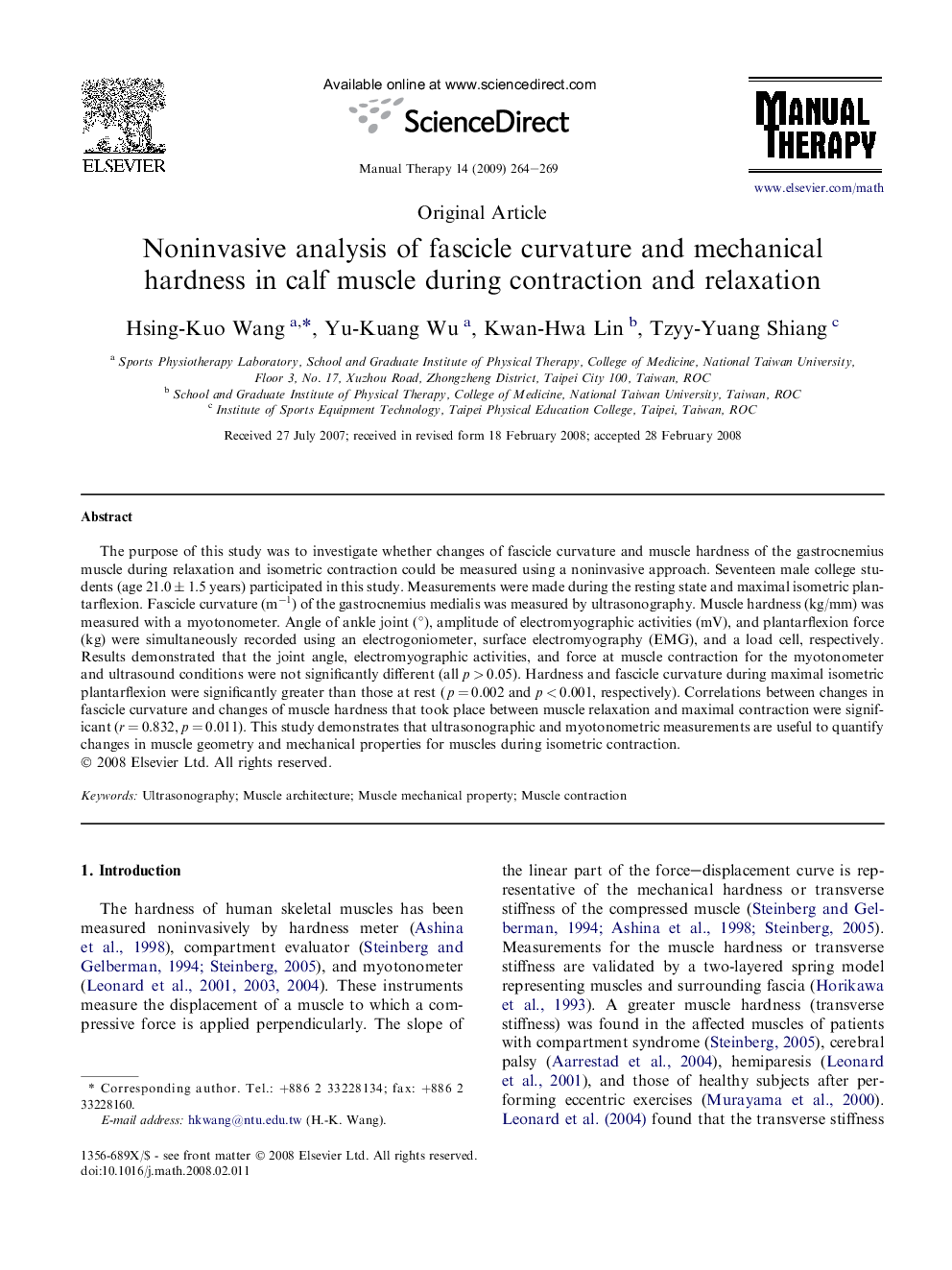| کد مقاله | کد نشریه | سال انتشار | مقاله انگلیسی | نسخه تمام متن |
|---|---|---|---|---|
| 2625539 | 1135951 | 2009 | 6 صفحه PDF | دانلود رایگان |

The purpose of this study was to investigate whether changes of fascicle curvature and muscle hardness of the gastrocnemius muscle during relaxation and isometric contraction could be measured using a noninvasive approach. Seventeen male college students (age 21.0 ± 1.5 years) participated in this study. Measurements were made during the resting state and maximal isometric plantarflexion. Fascicle curvature (m−1) of the gastrocnemius medialis was measured by ultrasonography. Muscle hardness (kg/mm) was measured with a myotonometer. Angle of ankle joint (°), amplitude of electromyographic activities (mV), and plantarflexion force (kg) were simultaneously recorded using an electrogoniometer, surface electromyography (EMG), and a load cell, respectively. Results demonstrated that the joint angle, electromyographic activities, and force at muscle contraction for the myotonometer and ultrasound conditions were not significantly different (all p > 0.05). Hardness and fascicle curvature during maximal isometric plantarflexion were significantly greater than those at rest (p = 0.002 and p < 0.001, respectively). Correlations between changes in fascicle curvature and changes of muscle hardness that took place between muscle relaxation and maximal contraction were significant (r = 0.832, p = 0.011). This study demonstrates that ultrasonographic and myotonometric measurements are useful to quantify changes in muscle geometry and mechanical properties for muscles during isometric contraction.
Journal: Manual Therapy - Volume 14, Issue 3, June 2009, Pages 264–269